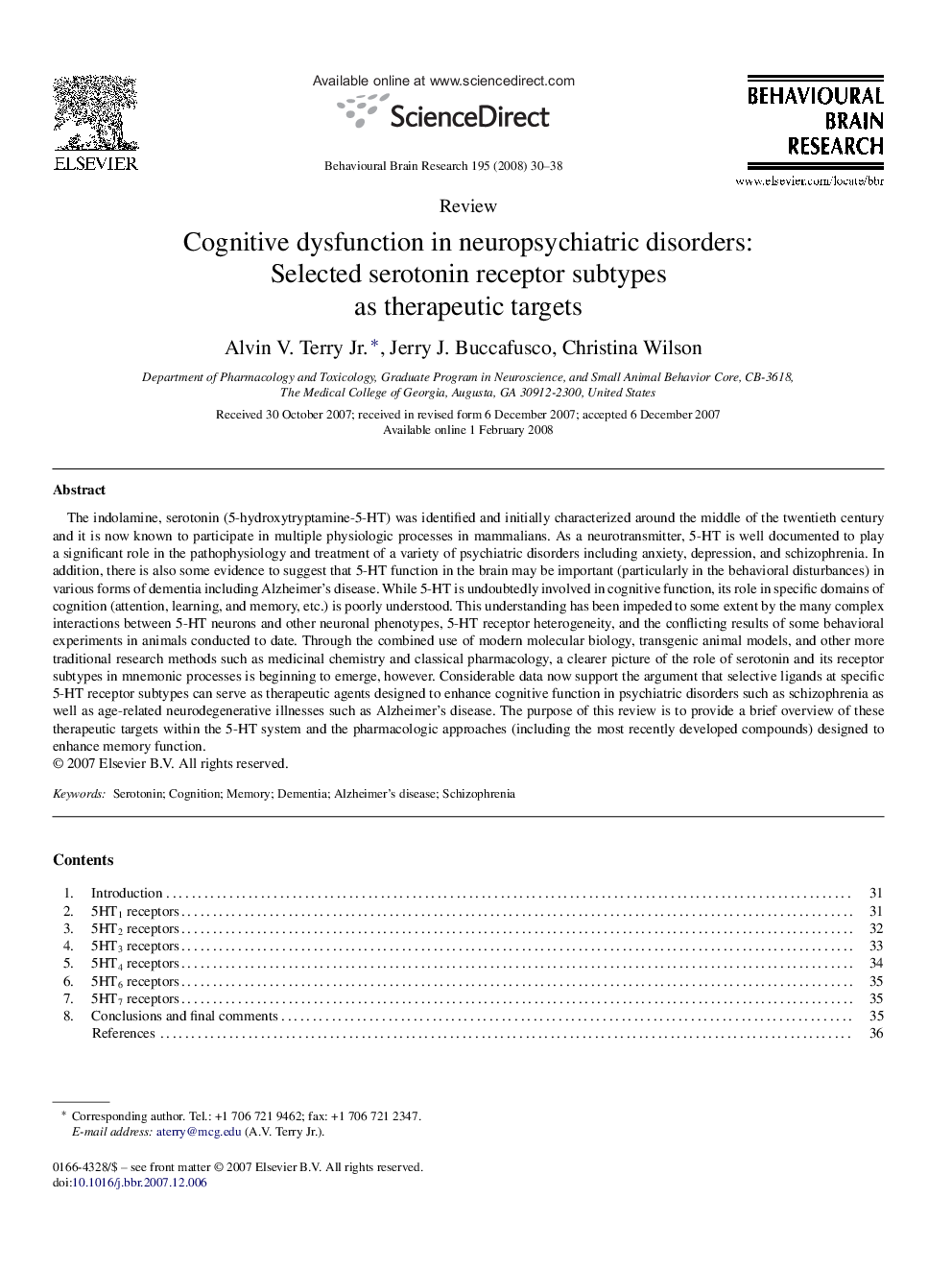| Article ID | Journal | Published Year | Pages | File Type |
|---|---|---|---|---|
| 4314913 | Behavioural Brain Research | 2008 | 9 Pages |
The indolamine, serotonin (5-hydroxytryptamine-5-HT) was identified and initially characterized around the middle of the twentieth century and it is now known to participate in multiple physiologic processes in mammalians. As a neurotransmitter, 5-HT is well documented to play a significant role in the pathophysiology and treatment of a variety of psychiatric disorders including anxiety, depression, and schizophrenia. In addition, there is also some evidence to suggest that 5-HT function in the brain may be important (particularly in the behavioral disturbances) in various forms of dementia including Alzheimer's disease. While 5-HT is undoubtedly involved in cognitive function, its role in specific domains of cognition (attention, learning, and memory, etc.) is poorly understood. This understanding has been impeded to some extent by the many complex interactions between 5-HT neurons and other neuronal phenotypes, 5-HT receptor heterogeneity, and the conflicting results of some behavioral experiments in animals conducted to date. Through the combined use of modern molecular biology, transgenic animal models, and other more traditional research methods such as medicinal chemistry and classical pharmacology, a clearer picture of the role of serotonin and its receptor subtypes in mnemonic processes is beginning to emerge, however. Considerable data now support the argument that selective ligands at specific 5-HT receptor subtypes can serve as therapeutic agents designed to enhance cognitive function in psychiatric disorders such as schizophrenia as well as age-related neurodegenerative illnesses such as Alzheimer's disease. The purpose of this review is to provide a brief overview of these therapeutic targets within the 5-HT system and the pharmacologic approaches (including the most recently developed compounds) designed to enhance memory function.
